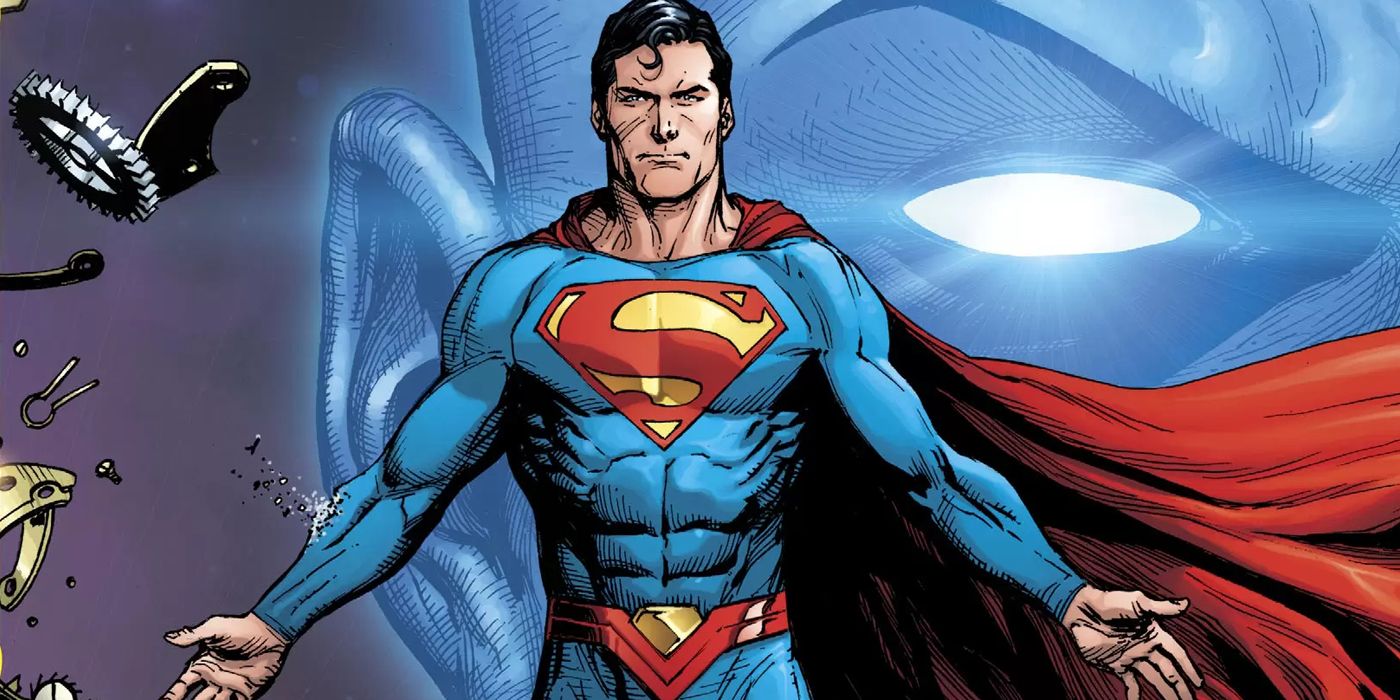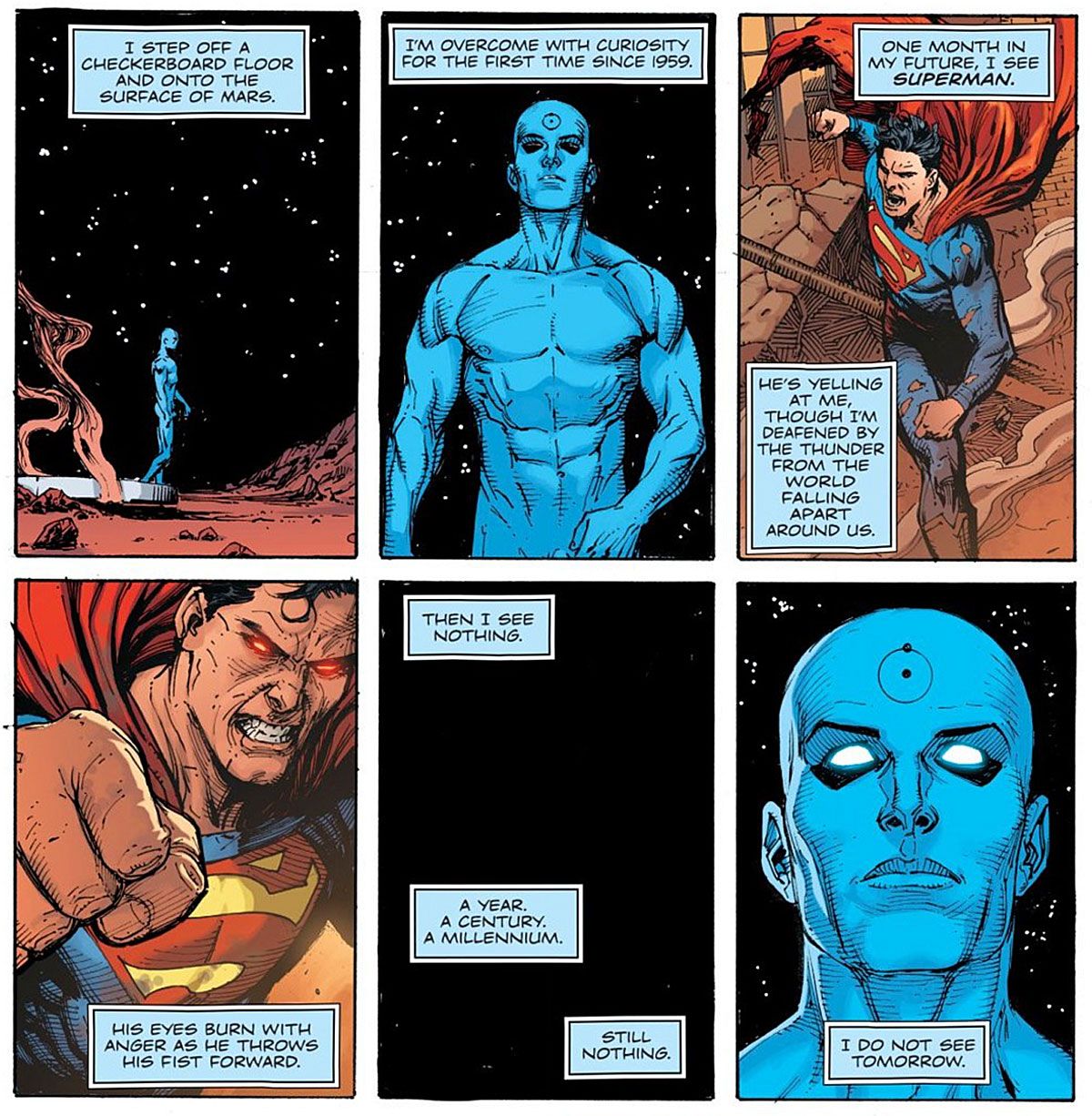WARNING: The following article contains major spoilers for Doomsday Clock #7, by Geoff Johns, Gary Frank and Brad Anderson, on sale now!
Whether you love it, hate it or just feel a tad ambivalent about it, Geoff Johns and Gary Frank's Watchmen sequel, Doomsday Clock, is nothing short of a fascinating experiment in modern comic book storytelling. To take a work as seminal as Alan Moore, Dave Gibbon and John Higgins' landmark series Watchmen and incorporate its characters into the larger DC Universe is one of the most audacious ideas even put into practice in the modern graphic medium.
This is not hyperbole. For many comic readers, Watchmen acts as the gold standard in superhero deconstruction stories. Everything from the color palette used to the panel structure in the 1987 miniseries was employed with the intent to channel the days of Golden and Silver Age comics. The book's subject matter was designed to corrupt the innocent superhero stories of yesteryear by viewing them through the lens of the Reagan Era's cultural nihilism.
RELATED: Doomsday Clock: The Story So Far, and What to Expect Next
Watchmen was self-contained and had a definitive ending, so the idea of it needing a follow up is damn near laughable -- but much like the heroes within their pages, comic book properties never truly die. The lasting effect of Watchmen's legacy has sustained the mythos told within the work for over 30 years. Resurrecting the property through expansion has been attempted before, however, in the form of the comic banner Before Watchmen, which consisted of a several miniseries and one-shots exploring the exploits of the titular team (and their predecessors) before the events of the original 12-issue series.
The results were mixed at best, but when the various titles of Before Watchmen worked they expanded on the world in very heartfelt ways (Darwyn Cooke's Minutemen might have been the most exemplary of the lot). With Doomsday Clock, the characters from Watchmen are looking to the future for the first time, and they have company. Several iconic characters from DC's pantheon have appeared, and even battled or teamed up with members of the Watchmen, but the one that has been teased from the start has finally been set in motion by Doomsday Clock #7. That is, Superman facing off against Doctor Manhattan.
Page 2: [valnet-url-page page=2 paginated=0 text='The Long-Awaited Fight Might Not Go How You Expect']
Alan Moore originally wanted to use characters from Charleston Comics (who were acquired by DC in the early '80s) to populate his team of dysfunctional superheroes. DC had other plans for them, so Moore developed alternate versions of several established heroes instead. If DC wasn't going to let the writer play with their toys, then new ones would have to be created, which, in hindsight, was probably for the best.
Doomsday Clock, however, is looking to have its cake and eat it, too. Instead of utilizing the world already built, DC is adding a heap of spice to the mix by allowing for interactions between the Watchmen and characters who starred in many of the comics the original series was either poking fun at or exploring the dingier aspects of.
Some of the meetings thus far have been a bit lackluster. We would have hoped that seeing Rorschach meet Batman would have been far more exciting and savage. However, other entanglements have been a bit more fascinating, specifically The Comedian gunning down The Joker's henchmen and how the Clown Prince of Crime just can't seem to get enough of Eddie Blake's rampage. These encounters are to be expected, so it's not as if we feel we've been sold a bill of goods.
But for seven issues readers have been waiting patiently to see Doctor Manhattan make his triumphant return. While he has been in the peripheral of the DC Universe since Rebirth, fans have not seen the blue, god-like hero outside of promotional artwork.
RELATED: Comedian is a One-Man Army in Doomsday Clock #7 Teaser
That's all changed. John Osterman is back and, after touching base with the characters we've met in the series so far, we are finally given a glimpse of a battle that could answer a lot of hypothetical debates among comic geek circles. Superman, for all intents and purposes, is a god, specifically in the mythological sense of the word. He's nigh invincible and his strength nearly immeasurable by any scientific means. Doctor Manhattan is of a similar stature regarding godly abilities, but instead of brute force his powers are derived from something far more metaphysical.
Wheres Superman can move heaven and Earth by harnessing iron will, Doctor Manhattan can simply dissolve matter on a molecular level. This leads us to question if Osterman's abilities can affect Kal-El in a similar manner. Superman is not of this world, so does that mean the laws of quantum mechanics apply to him? The final panels of Doomsday Clock #7 imply that they just might.


